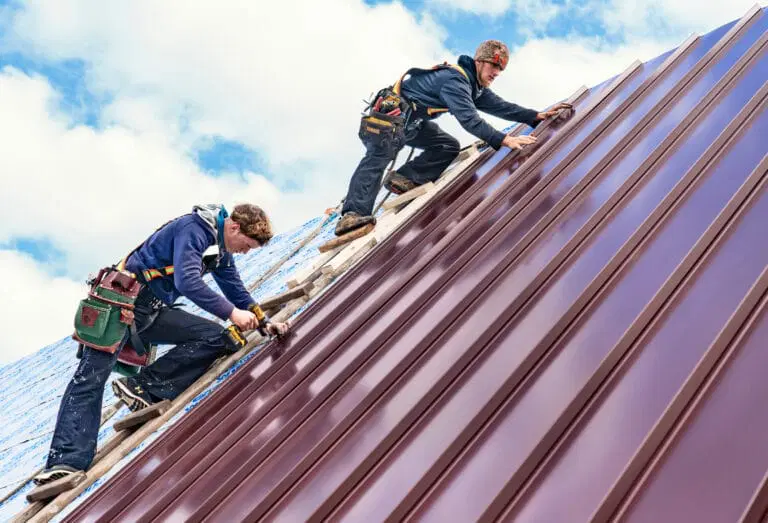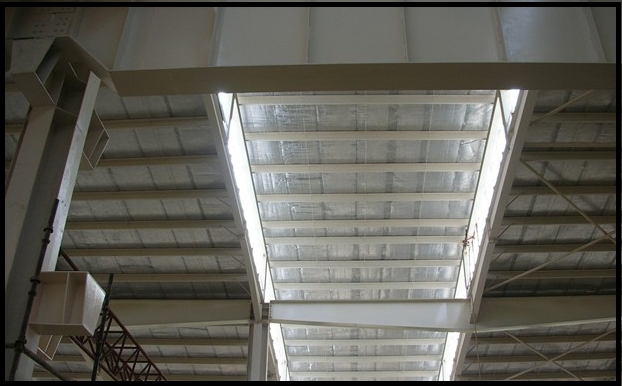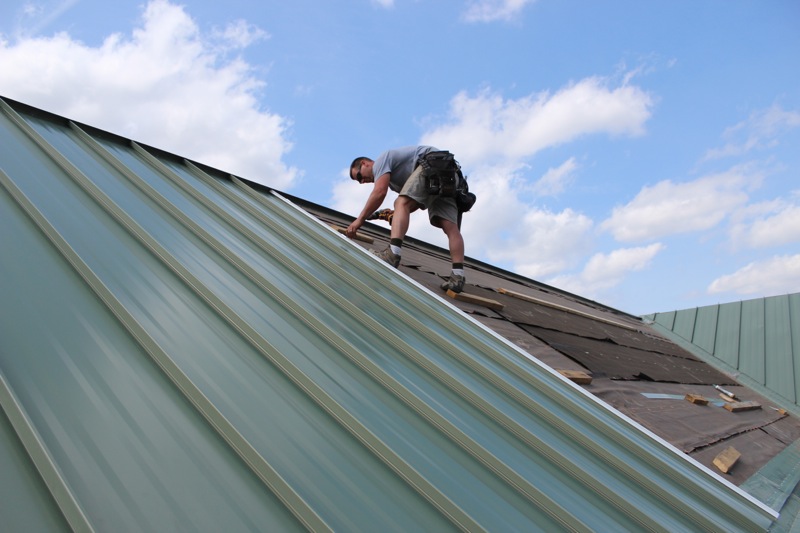Summer Roof Protection: mckinney steel roof installation for a Cooler North Texas Home

Texas summers test every roof. Prolonged triple-digit heat, high UV exposure, and wind-driven storms work together to shorten roof life and raise attic temperatures. The right summer strategy can keep your home cooler, cut energy use, and protect your investment with McKinney Steel Roof Installation.
If you are planning a project this year, start with proven methods that reflect heat, move hot air out, and seal your home against radiant gain. For specialized guidance and local installation options in Collin County, connect with Fireman’s Roofing & General Contractor LLC.
Why heat stresses your roof during a Texas summer
Summer heat affects a roof in three main ways. Understanding each helps you choose the right upgrades.
- Thermal cycling. Roof surfaces can swing more than 60 to 90 degrees in a single day. Repeated expansion and contraction can crack sealants, loosen fasteners, and fatigue shingles or panels.
- High UV load. UV light breaks down asphalt binders and dries out underlayment. It also fades pigments and reduces reflectivity over time if coatings are poor quality.
- Moisture movement. Heat drives moisture up and out of the home. Without proper ventilation, water vapor can condense under the roof deck at night, leading to mold or deck rot.
North Texas roofs also face hail and sudden storms. Materials must manage heat and resist impact. Choosing a cool, durable system lowers risk and keeps indoor comfort stable.
How much heat comes through the roof?

Your roof is the largest sun-facing surface on your home. During peak sun, the roof can account for a large share of total heat gain.
- On a clear 100 F day, dark roofs can reach 160 to 190 F at the surface.
- Light or reflective roofs can run 30 to 60 degrees cooler than dark roofs under similar conditions.
- Attic air temperatures often track 20 to 60 degrees above outdoor air without ventilation. With better ventilation and a reflective roof, that gap can drop significantly.
Typical share of midday heat gain by path in a North Texas single-family home, if insulation and windows are standard:
Heat gain share at 3 p.m. on a clear day Roof and attic | ########### 35% Windows and glass | ######## 30% Walls and doors | ##### 20% Infiltration/leaks | ### 10% Duct losses (attic) | # 5%
Actual values vary by orientation, shading, materials, and duct location. If your ducts run through a hot attic, roof improvements can deliver big comfort gains.
What roofing materials reflect heat best?

Reflectivity and emissivity control how a roof handles solar heat. Look for both high solar reflectance and high thermal emittance. Top performers for Texas summers include:
- Steel roofing with cool-color finishes. Modern coatings reflect a large share of sunlight, even in darker hues. Standing seam panels shed heat fast, and raised seams limit heat transfer into the deck.
- Aluminum panels with reflective coatings. Light weight, high reflectivity, and good corrosion resistance.
- Cool-rated asphalt shingles. Light colors and special granules can improve reflectivity compared to standard dark shingles, though still below metal.
- Synthetic or polymer roofs with cool pigments. Some products match metal for reflectivity but differ in cost and structural needs.
Want a deeper look at local options and roof styles used across DFW? Review this guide to types of roofs popular in North Texas.
Which roofing types are worst in Texas heat?
Some materials run hot or degrade faster under UV and thermal cycling.
- Dark asphalt shingles. They absorb heat and age faster under intense sun. They also drive attic temperatures higher.
- Wood shakes. Attractive, but heat and UV accelerate weathering. They also need regular maintenance and treatments to manage fire risk.
- Uncoated black membranes on low-slope areas. Without a cool coating, they can reach extreme surface temperatures.
- Old or fatigued underlayment. Even with a decent surface, degraded underlayment can transfer heat and allow leaks.
What is radiant barrier roofing?

A radiant barrier reflects radiant heat before it enters the living space. It usually takes one of three forms:
- Foil-faced decking. OSB or plywood with an aluminum layer facing the attic. It reflects radiant heat away, lowering attic temperatures.
- Staple-up foil barrier. Foil installed on the underside of rafters with an air gap.
- Reflective underlayments. Synthetic layers under metal or shingles that add a heat-reflective surface.
Radiant barriers work best with ventilation and insulation. Combined, these steps can reduce attic temperatures and cut strain on HVAC equipment.
Shade vs. ventilation: which matters more?
Both matter, but most homes cannot add large-scale roof shading. Ventilation is the more practical lever.
- Shade. Trees or overhangs reduce solar load, but placement and growth take time. Be mindful of limb clearance to avoid impact damage.
- Ventilation. Balanced intake and exhaust move hot air out. Soffit vents plus ridge vents give consistent airflow. Gable vents can supplement. Powered vents help in low-wind areas, but seal duct penetrations to avoid drawing conditioned air out of the home.
- Insulation. R-38 or better is common for attics in our region. Proper insulation slows heat flow into living areas.
Use all three where possible. If you must choose, prioritize ventilation and a reflective roof surface. Those deliver the most consistent summer relief.
Should You Consider mckinney steel roof installation?
Benefits of steel roofs in Texas
- High reflectivity with cool-color finishes. Keeps roof surface cooler than dark asphalt.
- Fast heat shedding. Metal cools quickly once shade hits.
- Long service life. Many steel systems last 40 to 70 years with proper maintenance.
- Hail and fire resistance. Class 4 impact ratings are common. Many products carry top fire ratings.
- Lower attic temperatures when paired with venting and radiant barrier underlayment.
- Light weight. Often lighter than tile, sometimes similar to or lighter than multi-layer shingles. Good for retrofits.
If you want a local upgrade that cuts heat and adds resale value, consider mckinney steel roof installation. The right system can reduce summer load on your AC and improve comfort on the hottest days.
Comparing asphalt, steel, and tile
| Feature | Asphalt Shingles | Steel Roofing | Clay or Concrete Tile |
|---|---|---|---|
| Typical Reflectivity | Low to Medium. Higher with cool-rated shingles | Medium to High with cool-color coatings | Medium. Higher in light colors |
| Service Life | 15 to 30 years | 40 to 70 years | 40 to 75 years |
| Weight | Light to Medium | Light | Heavy. Structural check needed |
| Hail Resistance | Varies. Class 4 available | Often Class 4 options | Can chip or crack under large hail |
| Ventilation Needs | High. Ridge and soffit recommended | High. Combine with underlayment/radiant barrier | High. Critical due to mass and heat load |
| Upfront Cost | Lower | Medium to Higher | Higher |
| Summer Performance | Fair to good with cool shingles | Very good with cool coatings | Good. Thermal mass helps, but still heats under sun |
Installation timeline and what to expect
Here is a typical process for steel roof projects in North Texas:
- Assessment and quote. A tech inspects decking, ventilation, flashing, and penetrations. You receive options and a written scope.
- Material selection. Panel style, color, gauge, and underlayment. Many choose standing seam with a cool-color finish.
- Permits and HOA coordination. Submit color and profile samples as needed.
- Scheduling. Summer calendars fill fast. Book early for optimal start dates.
- Removal and prep. Tear-off if required. Inspect and repair decking. Install underlayment and needed ventilation.
- Panels and flashing. Panels are measured and installed with matching trim, flashing, and fasteners. Penetrations are sealed.
- Final walkthrough and cleanup. Confirm details and warranty documents.
If your goal is a summer-ready home, schedule your mckinney steel roof installation before heat peaks. Crews can work year-round, but early planning helps avoid delays and secures preferred colors.
When is the best time to install a new roof in North Texas?

Late winter through spring is often ideal. Summer installs also work with proper staging and safety planning. Weather windows, crew availability, and your material choice all matter. For timing tips and scheduling insights, read when is the best time to get a new roof in Dallas TX.
Cost comparison: new steel vs. repairing an old roof
Short-term repairs can push problems down the road. A cost plan helps you decide.
| Scenario | Upfront Cost | 5-Year Cost | 10-Year Cost | Notes |
|---|---|---|---|---|
| Patch repairs on aging shingles | $500 to $2,000 per event | $3,000 to $7,000 | $6,000 to $12,000 | Risk of repeat leaks, higher cooling costs, potential deck damage |
| Partial reroof with shingles | $6,500 to $12,000 | $7,500 to $14,000 | $10,000 to $18,000 | Lower upfront. Shorter life. Heat performance varies |
| Full steel roof replacement | $18,000 to $40,000+ | $18,000 to $40,000+ | $18,000 to $40,000+ | Higher upfront. Longer life. Better summer performance |
Numbers vary by size, slope, complexity, and product choice. Many owners compare lifecycle cost and summer comfort. If you plan to stay 10 or more years, a steel system often wins on durability and performance.
Energy savings with steel roofing
Cool metal roofing can reduce attic temperatures and peak cooling load. Savings depend on your home’s insulation, duct location, and HVAC efficiency.
- Attic temperature reduction. Reflective steel plus balanced ventilation can lower attic air temperature significantly compared to a dark shingle roof.
- Lower HVAC run time. Reduced attic heat means shorter compressor cycles and less wear on equipment.
- Better comfort on the second floor. Bedrooms under the roof benefit the most.
Illustrative energy impact after upgrading from dark shingles to a cool-coated steel roof on a 2,200 sq ft McKinney home:
Before upgrade: Peak HVAC load ~ 100% baseline After upgrade: Peak HVAC load ~ 85% to 92% (conditions vary) Annual cooling kWh: 2% to 10% lower in many cases
To move forward with a high-reflectivity system, plan your mckinney steel roof installation with a crew that understands coatings, ventilation, and radiant barriers.
Common myths about metal roofs in summer
- Myth: Metal roofs make homes hotter. Fact: Reflective metal usually runs cooler than dark shingles. It also cools faster when shaded.
- Myth: Metal roofs are noisy in the rain. Fact: With decking, underlayment, and attic insulation, noise is comparable to shingle roofs.
- Myth: Metal roofs always dent badly in hail. Fact: Many steel products carry Class 4 impact ratings. Thicker gauges resist dents better.
- Myth: Lightning strikes metal roofs more often. Fact: Roof material does not increase strike probability. Metal safely conducts and disperses energy when grounded.
Importance of roof color, coating, and reflectivity
- Color choice. Light colors reflect more sun. Today’s cool-color pigments boost reflectivity even in medium and darker shades.
- Coatings. Look for quality factory-applied finishes with high solar reflectance and emissivity values.
- Maintenance. Keep the surface clean. Dirt and algae reduce reflectivity. Schedule gentle cleaning as needed.
Planning checklist: preparing your home for replacement
Use this checklist to streamline your project and protect your home during summer heat.
- Confirm scope. Deck repairs, underlayment choice, ventilation upgrades, flashing plan.
- Choose profile and color. Balance curb appeal with reflectivity.
- Review attic ventilation. Ensure balanced intake and exhaust. Add ridge vent or fans if needed.
- Assess insulation. Target at least R-38. Seal top plates and can lights.
- Ducts in the attic. Seal and insulate ducts. Consider moving or encapsulating if practical.
- Schedule smart. Align delivery with weather windows and HOA approvals.
- Protect landscaping. Mark irrigation heads. Cover plants near tear-off zones.
- Plan access. Clear driveway space for the crew and the dumpster.
- Pet and family plan. Noise and vibration are normal. Arrange quiet time if needed.
- Final walkthrough. Confirm color, flashing, ridge details, and cleanup.
Sample budget table: low, mid, premium ranges
Estimated installed costs for a typical 2,000 to 2,400 sq ft North Texas home. Your home may be higher or lower based on pitch, stories, penetrations, and materials.
| Tier | Roof Type | Approx. Range | What You Get |
|---|---|---|---|
| Low | 3-tab or basic architectural shingles | $9,500 to $14,500 | Basic underlayment, standard colors, limited upgrades |
| Mid | Cool-rated architectural shingles or entry steel panels | $14,500 to $24,000 | Upgraded underlayment, improved ventilation, cool colors |
| Premium | Standing seam steel with cool-color finish | $24,000 to $45,000+ | High-performance underlayment, full flashing package, enhanced ventilation |
Ask for itemized quotes so you can compare apples to apples. Include tear-off, decking repairs, underlayment type, ventilation upgrades, and disposal fees.
Local permit, code, and warranty expectations
- Permits. Many cities in Collin and Dallas counties require a roofing permit. Your contractor should verify requirements and pull the permit.
- Code. Expect compliance with current IRC-based standards, local amendments, and manufacturer specifications.
- Wind and hail. Many products carry wind ratings and impact ratings. Ask to see documentation.
- Warranties. You should receive a manufacturer warranty on materials and a separate workmanship warranty. Keep both in a safe place.
- Inspections. Some cities inspect after installation. Plan for access and timing.
When to call a pro + how to compare roof quotes
Call a pro if you notice any of the following:
- Attic temperatures that feel extreme even at night
- Shingle granule loss, curling, or exposed mat
- Water stains on decking or ceiling
- Rust or failed sealant around roof penetrations
- Unbalanced or blocked ventilation
Compare quotes using these criteria:
- Product details. Panel gauge, finish type, and color. Underlayment brand and specs. Ventilation line items.
- Scope. Tear-off, deck repairs, flashing, and disposal included.
- Crew experience. Ask how many local metal roofs they install each year.
- Schedule and weather plan. How will they protect your home if storms hit.
- Warranty terms. Materials and workmanship, what is covered, and how to file a claim.
Still deciding on material type for your home? Review regional options in this post on popular North Texas roofs.
Practical upgrades that keep your Texas home cool
- Choose a reflective roof. Metal with a cool finish or cool-rated shingles in a light color.
- Install a radiant barrier. Foil-faced decking or reflective underlayment.
- Balance attic ventilation. Soffit intake and ridge exhaust. Add gable vents if needed.
- Seal air leaks. Around can lights, attic hatches, and duct penetrations.
- Add insulation. Aim for R-38 or better in the attic.
- Tune ducts. Seal with mastic, insulate, and test airflow.
When your plan includes both a reflective new roof and ventilation fixes, you will feel the difference on the second floor during peak heat.
Frequently asked questions
How long does a steel roof last in North Texas?
Many systems last 40 to 70 years with maintenance. Check warranty terms and finish quality.
Will a steel roof work with solar panels?
Yes. Standing seam is an excellent base for clamp-on racking, which reduces penetrations.
Can I install over existing shingles?
Some steel systems allow it, but tear-off is often best. It improves deck inspection, adds new underlayment, and resets flashing and ventilation.
Is a steel roof heavier than shingles?
No. Steel is typically similar in weight or lighter than multi-layer shingles, and far lighter than tile.
Next steps if you want a cooler summer
- Book a roof and attic assessment.
- Request itemized options for reflective roofing, underlayment, and ventilation.
- Ask for at least two color choices in cool-color finishes.
- Confirm schedule and permit requirements.
- Plan your attic insulation and duct sealing while the roof work is underway.
When you are ready to move forward, choose an installer with local experience in reflective systems. A careful plan delivers comfort, energy savings, and long roof life.
Local case-style example
Profile of a typical 2-story home in McKinney with a dark shingle roof and ducts in the attic:
- Before. High second-floor temperatures. Long AC cycles, especially after 3 p.m.
- Upgrade. Standing seam steel with cool-color finish, high-temp synthetic underlayment, new ridge vent, and added soffit intake.
- After. Noticeably cooler upstairs in late afternoon. Shorter AC cycles. Quieter roof system during wind and rain.
Results vary, but these steps consistently reduce peak heat and improve comfort.
A quick word on storm readiness
Summer heat is often followed by sudden storms or hail. Steel roofs with Class 4 ratings can offer strong impact resistance and long-term protection. Confirm fastener systems, panel thickness, and flashing details. Good details prevent wind-driven rain from finding a path inside.
Putting it all together
For many homes in our area, the best one-two punch is a reflective steel roof plus balanced ventilation. Add radiant barriers and attic insulation to complete the package. If this aligns with your goals, start planning your mckinney steel roof installation now so materials and crew dates line up before peak heat.
Conclusion
Texas heat is hard on roofs. You can fight back with the right materials and a focused plan. A reflective steel roof, quality underlayment, and balanced ventilation reduce attic temperatures, improve comfort, and protect your home for decades. Smart timing also helps. Review seasonal schedules, pick your color and profile, and confirm ventilation upgrades in your scope.
Ready to compare options or get a local quote in Collin County. Talk with Fireman’s Roofing & General Contractor LLC to plan a heat-ready roof that fits your budget and timeline.
